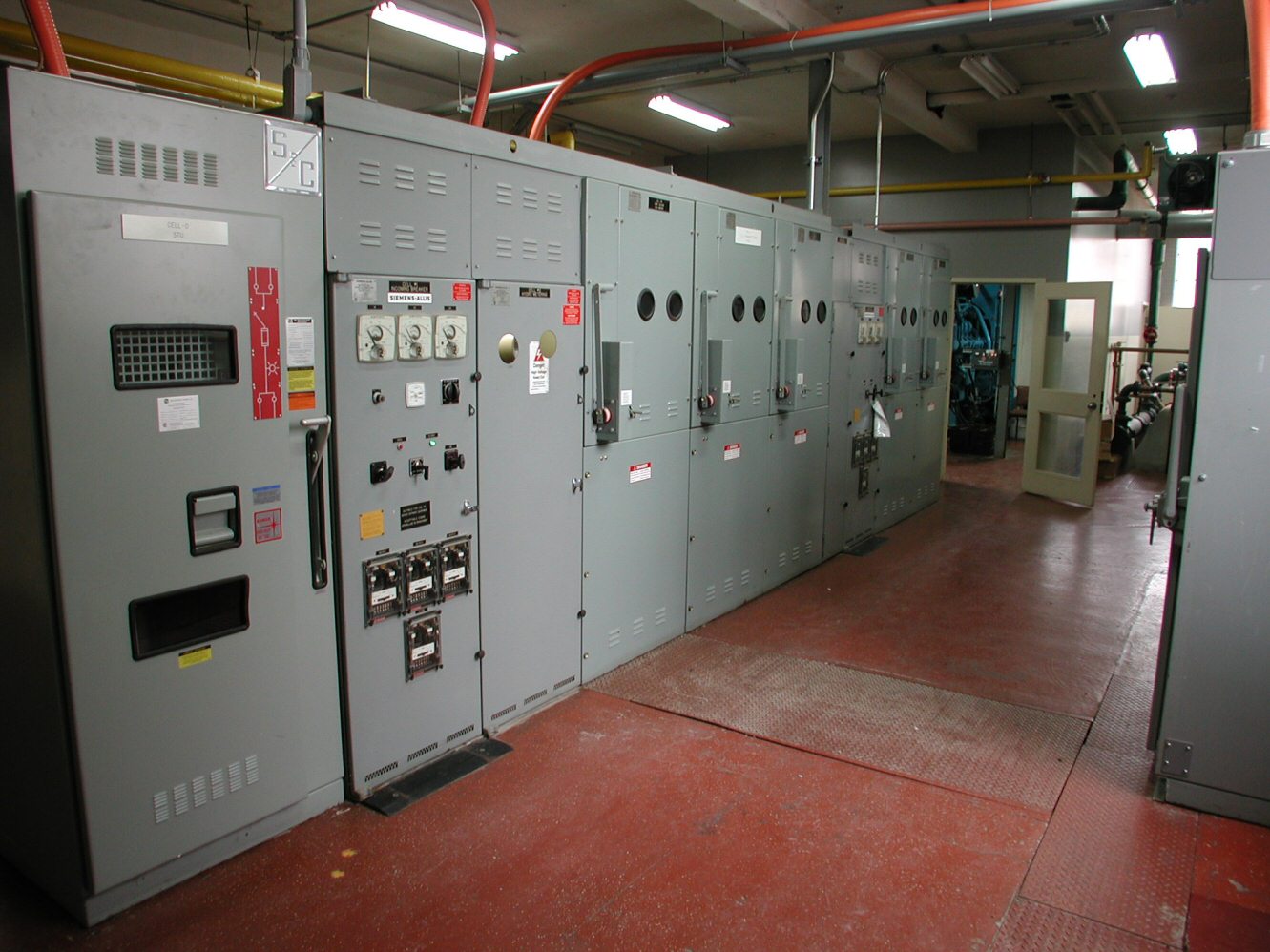

Conductors
The conductors that form part of the electrical system are the means by which electricity is transferred from one place to another. Typically, conductors are made from copper, which offers a good balance between electrical conductivity and cost. Aluminium may also be used in some instances. Conductors are typically insulated with PVC or other synthetic insulating materials.
Most conductors are used in the form of electrical cables. These can be run either separately or within containment systems between two points of an electrical system.
Other conductors commonly used in electrical systems in buildings are busbars. These are usually copper or aluminium conductors and run within an insulating and safety enclosure, typically a trunking. These may be used where larger conductors are required, as the busbar trunking is often physically smaller than cables of equivalent current carrying capacity. Such busbar trunking is usually made up of rigid lengths, and may have several tapping points, where supplies may be tapped or branched off.
Switchgear
As well as conductors, an electrical system will also comprise equipment that provides switching and protection capabilities, known as switchgear. Switchgear enables with manual or automated control of current flow.
Manual control relies on human intervention to work smoothly and is typically employed for isolation switching and functional switching.
Automatic switching may be based on protection characteristics for devices that detect excess current flow and act to prevent damage to cabling that may lead to fire and/or electric shock. This is usually achieved through the use of circuit breakers and/or fuses.
Automatic switching may also be handled by control systems, where electrical signalling from other systems is used to control devices known as relays or contactors, which in turn control higher power circuits.
Load devices
The final components of an electrical system are referred to as load devices. These convert electrical energy into other forms of energy such as heat, light, or movement
7 Tips for Lowering Warehouse Energy Bills
- Conduct regular energy efficiency
- Install insulated industrial
- Seal around trailers at dock
- Install HVLS Fans for
- Section warehouse by
- Update your lighting
- Utilize smart doors that monitor energy usage.
